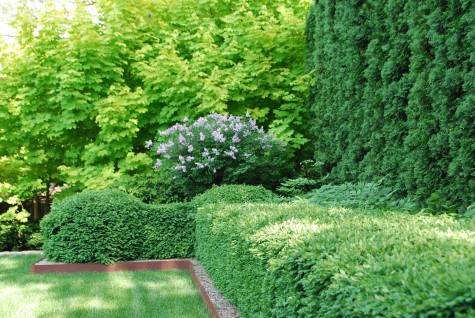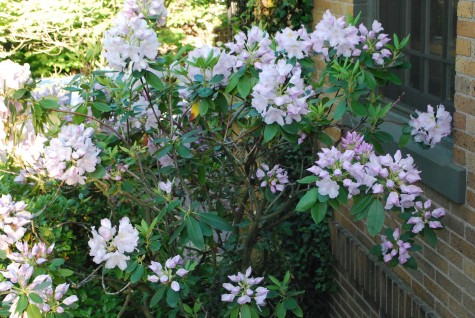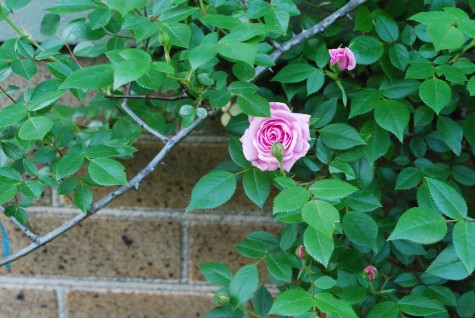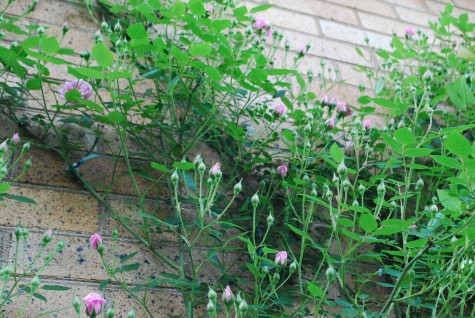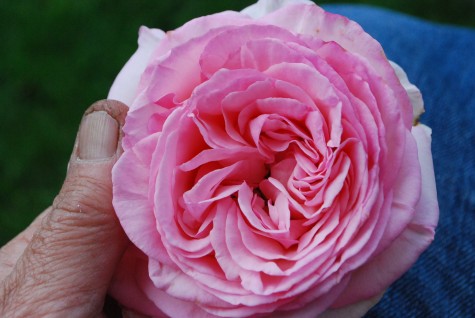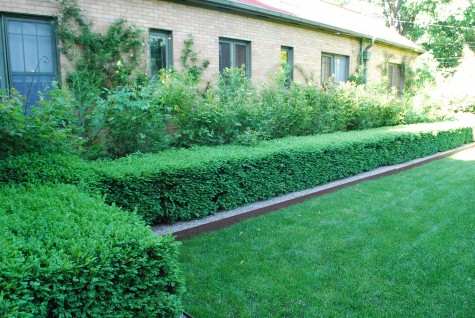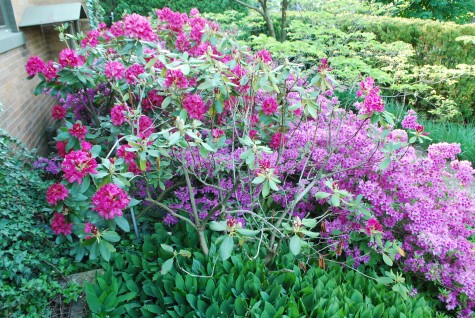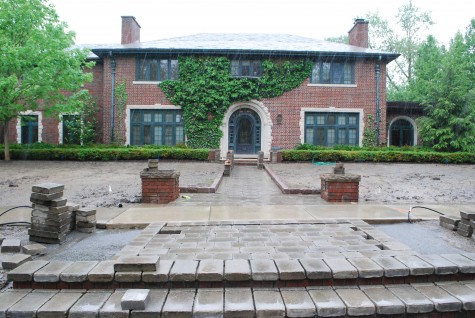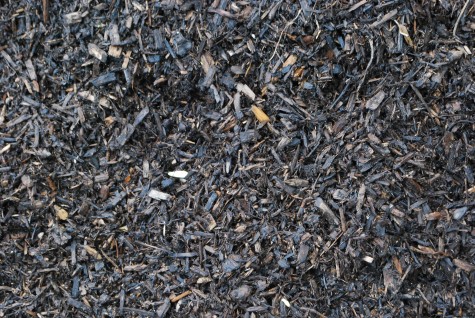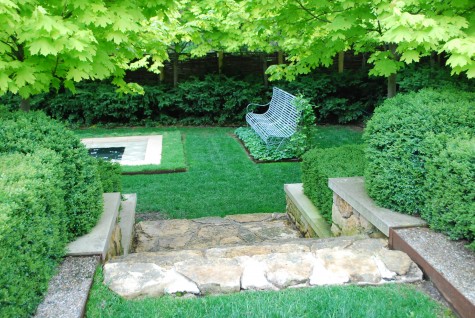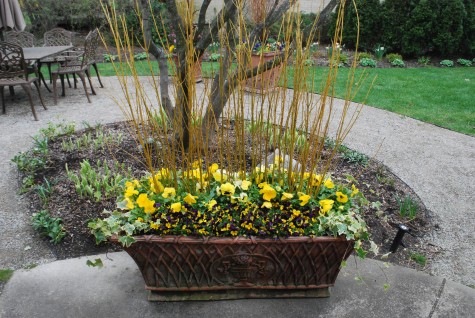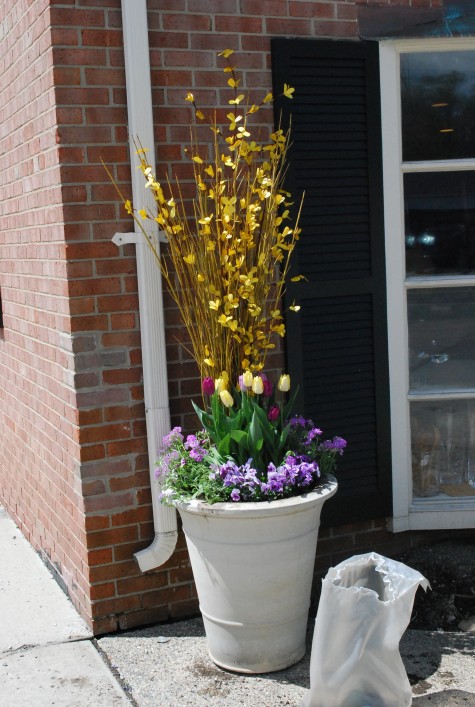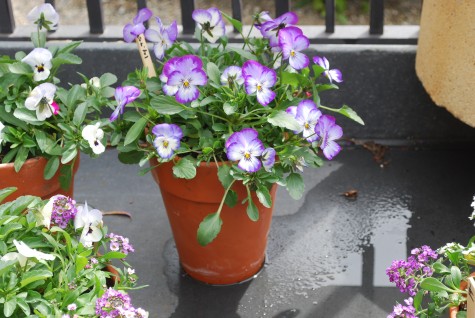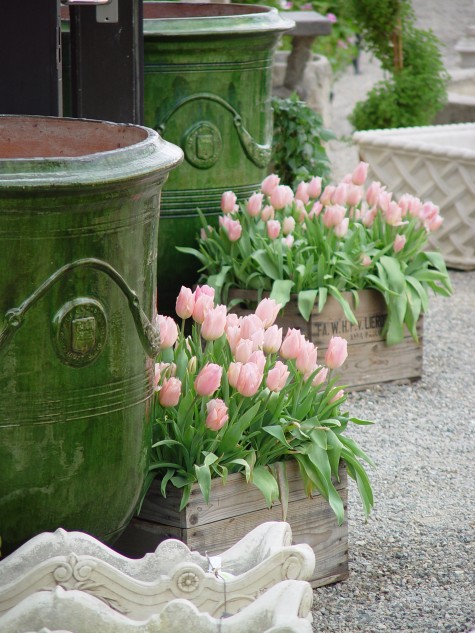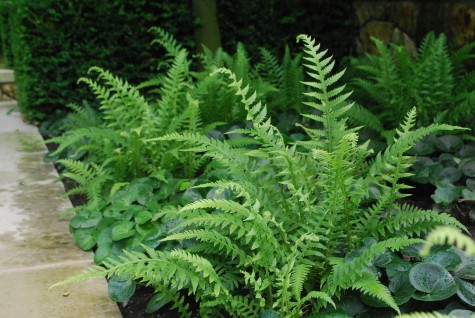
Our forecast has been, is, and will be for rain. We have had lots and lots of it. Three or four storms every day, and then all night long-these weepy skies are in a holding pattern right over the top of us. Last night was the first time I have been able to get into the garden after work in four or five days. Needless to say, I was anxious to get out there before the skies let loose again. What a relief to be sitting on the wall, having a glass of wine. My Japanese beech ferns have loved this weather; they are growing lustily.
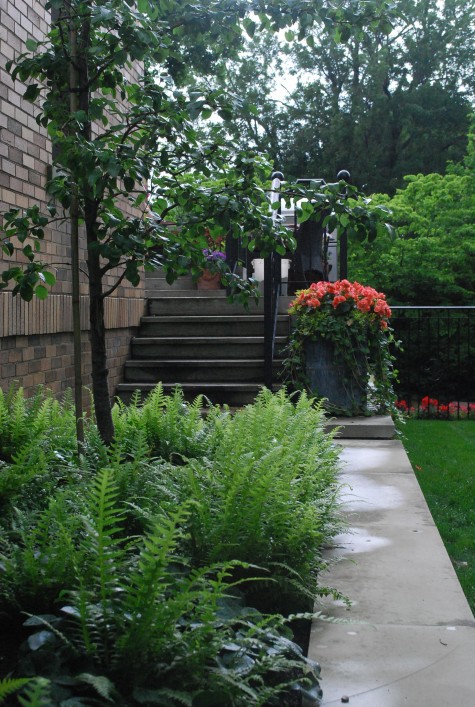 There was even a little pale and wan early evening light. This is what passes for sun these days. Not that I was fussing. I have gone through 2 sets of clothes and 3 pairs of socks every day for at least a week. Rain can be very wearing when you are trying to work outside. Sopping wet pots weigh a lot, and soaked dirt is not all the fun to handle. I am not crazy about handling plant material when it is wet. I always have the vague suspicion that I am fostering water borne illness-don’t ask me where that comes from. The wet dirt finds its way into my socks, and gets on my face. I was home, dry, and outside-it was lovely.
There was even a little pale and wan early evening light. This is what passes for sun these days. Not that I was fussing. I have gone through 2 sets of clothes and 3 pairs of socks every day for at least a week. Rain can be very wearing when you are trying to work outside. Sopping wet pots weigh a lot, and soaked dirt is not all the fun to handle. I am not crazy about handling plant material when it is wet. I always have the vague suspicion that I am fostering water borne illness-don’t ask me where that comes from. The wet dirt finds its way into my socks, and gets on my face. I was home, dry, and outside-it was lovely. 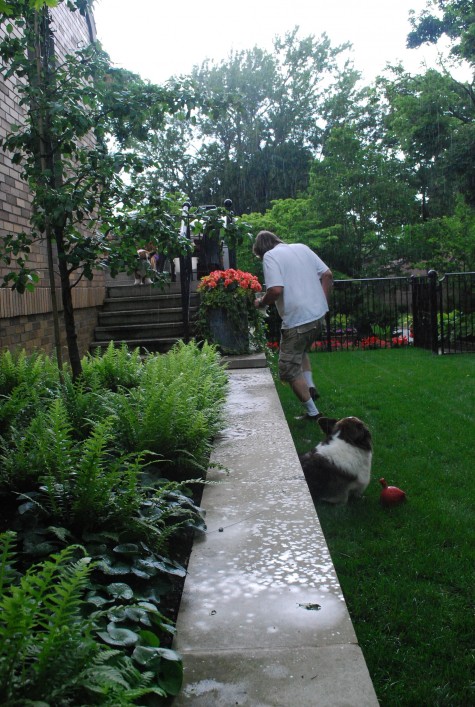 Just as Buck and I got settled down with the dogs-out of no where, a burst of rain. Buck is not very keen about experiencing weather. He likes the house warm in the winter, and cool in the summer. Raindrops on his glasses irritate him. He took off on me as if he had been struck by lightning. Even Milo was shocked at how fast a getaway he managed to make. I was sitting underneath a fairly heavy canopy of Princeton Gold maple tree leaves-would this not act as an umbrella?
Just as Buck and I got settled down with the dogs-out of no where, a burst of rain. Buck is not very keen about experiencing weather. He likes the house warm in the winter, and cool in the summer. Raindrops on his glasses irritate him. He took off on me as if he had been struck by lightning. Even Milo was shocked at how fast a getaway he managed to make. I was sitting underneath a fairly heavy canopy of Princeton Gold maple tree leaves-would this not act as an umbrella?
 Seconds later it was raining harder. The drops bouncing off the surface of the fountain looked great. I was beginning to enjoy watching the rain-at least I thought I was. I just didn’t want to give in to it, and leave the garden.
Seconds later it was raining harder. The drops bouncing off the surface of the fountain looked great. I was beginning to enjoy watching the rain-at least I thought I was. I just didn’t want to give in to it, and leave the garden.
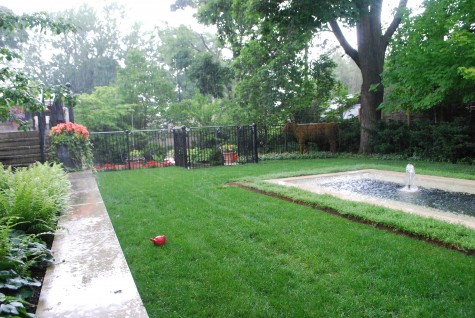 By now it was raining hard enough that Howard had ditched me, with Milo not far behind. Be assured that if Milo runs off sans his ball, rather than taking it with him, he is feeling something coming on that he wants to get away from fast. Why wasn’t I smart enough to take a cue from him?
By now it was raining hard enough that Howard had ditched me, with Milo not far behind. Be assured that if Milo runs off sans his ball, rather than taking it with him, he is feeling something coming on that he wants to get away from fast. Why wasn’t I smart enough to take a cue from him?
 Seconds later it was pouring. My maple tree umbrella was suddenly breached; I had to make a run for it.
Seconds later it was pouring. My maple tree umbrella was suddenly breached; I had to make a run for it.
 By the time I got to the bottom of the deck stairs, I was drenched to the skin.The rain was bouncing up off the deck boards a foot or better into the air. I don’t think I have ever been this wet. I had to take a picture, which I did on the fly.
By the time I got to the bottom of the deck stairs, I was drenched to the skin.The rain was bouncing up off the deck boards a foot or better into the air. I don’t think I have ever been this wet. I had to take a picture, which I did on the fly.
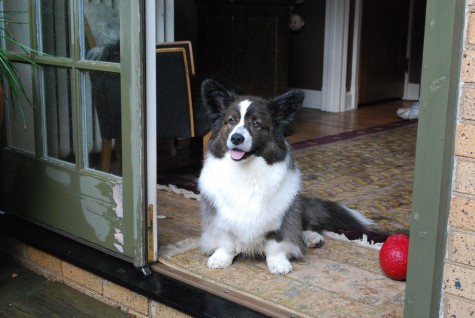
Milo was waiting for me. Clever dog-he must have remembered he had a ball inside. He did not budge from this spot until the rain quit.
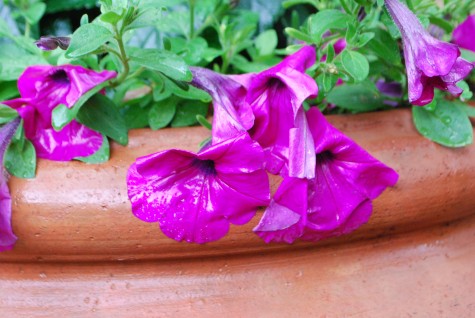
These purple wave petunias plastered on the rim of a terra cotta pot perfectly describes how I looked when I finally got inside. Buck couldn’t help but laugh. I cannot remember the movie about the women’s baseball team when coach Tom Hanks looks at one of his players in tears and roars “Crying? There’s no crying in baseball.” That is exactly what Buck said when he saw all the rain water rolling down my face – Come on Deborah-there’s no crying in gardening.


